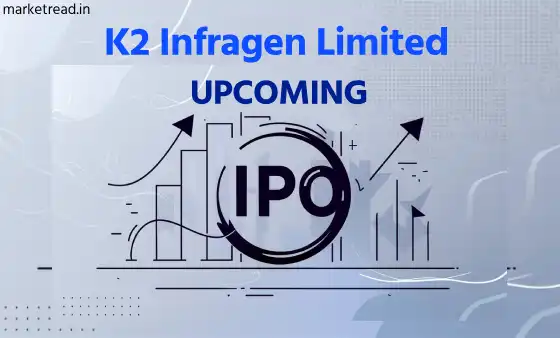HDB Financial Services IPO: HDB Financial Services, a subsidiary non-banking financial company (NBFC) of HDFC Bank. HDB Financial is making its debut in the capital markets through its IPO. Totaling ₹12,500 crore IPO, has become one of the largest NBFC IPOs in India for 2025.
Investors have shown great enthusiasm for the HDB Financial IPO due to the backing of HDFC Bank and the strong performance of the company.
According to the available information, the HDB Financial IPO has been subscribed about 16.7 times. Therefore, in this article, we will provide a brief background of the company, a comprehensive overview of the IPO objectives and structure, share allocation structure, as well as opportunities and risks for investors.
Table of Contents
About HDB Financial Services IPO
HDB Financial Services Limited was founded in 2007 and today is one of India’s leading retail-focused NBFCs. It is a subsidiary of HDFC Bank Limited and is classified as an “Upper Layer NBFC” (NBFC-UL) by the RBI. Based on the size of loan disbursements, HDB is the seventh-largest NBFC in India.
The company has built an extensive network across the country, with over 1,770 branches and over 19 million customers. Notably, this branch network is spread across over 1,100 cities in 31 states/union territories, with over 80% of the branches located in tier-4 or smaller cities – indicating strong penetration in underserved rural and semi-urban areas.
HDB Financial primarily provides loans in three verticals: enterprise loans, asset finance, and consumer finance. This includes loans for small and medium businesses, loans for the purchase of commercial vehicles and equipment, as well as secured/unsecured loans for individuals and consumer purchases.
The company focuses on customers outside the traditional banking system (e.g., new-to-credit customers, lower-middle-income groups) to bring first-time borrowers into the financial mainstream. HDB Financial also provides back-office BPO services to its promoter company HDFC Bank and distributes insurance products to loan customers.
The company has received a stable AAA credit rating from CRISIL and CARE, which helps raise funds at lower costs.
In recent years, HDB Financial Services has shown remarkable growth. Between FY2021-22 and FY2023-24, the company’s revenue and profit have seen significant increases—revenue grew from ₹11,306 crore in FY22 to ₹14,171 crore in FY24, while net profit surged from ₹1,011 crore to ₹2,460 crore. This growth has been achieved mainly due to loan book expansion, new customer acquisition, and financial improvements.
However, due to higher provisions to strengthen risk management recently, the company’s PAT slightly declined to ₹2,176 crore in FY25. Nevertheless, the company’s ROA (2.1%) and ROE (14-15%) remain at satisfactory levels, supporting future expansion.
GNPA is only around 2%, and Net NPA is less than 1%, indicating caution regarding loan quality. Overall, the strong backing of the parent company, a vast customer base, and consistent revenue growth have established HDB Financial as a significant player in the NBFC sector.
HDB Financial Services IPO: Objectives and Structure
The objectives of the HDB Financial Services IPO as follows:
- To raise new capital to boost business growth.
- To monetize a portion of promoter HDFC Bank’s shareholding.
Through this IPO, ₹2,500 crore will be raised by issuing new shares via a fresh issue, and ₹10,000 crore will be raised through an offer-for-sale (OFS), where HDFC Bank will sell some of its existing shares. The total proceeds of ₹12,500 crore from this issue aim to significantly increase HDB Financial’s Tier-1 capital and enhance the company’s future loan disbursement capacity.
After the IPO, there will be a change in the company’s shareholding structure. HDFC Bank’s current shareholding will reduce from approximately 94.3% to around 74.2%, creating a nearly 25.8% stake for public shareholders. This change presents an opportunity for HDFC Bank to convert some of its stake into cash.
However, the promoter will still retain control (74% shares), ensuring HDFC Bank’s managerial control and support for the company.
According to some experts, in the future, due to RBI’s bank-NBFC overlap regulations, HDFC Bank may have to reduce its stake in HDB further. If the bank reduces its stake below 50%, HDB Financial Services may operate as an independently listed associate company, potentially easing regulatory restrictions. Investors will need to monitor what these potential changes mean for shareholders in the coming years.
HDB Financial Services IPO Share Allotment Structure
In the HDB Financial Services IPO, different reservations and share allotments were made for various categories of investors. A total of 16,89,18,919 shares (approximately 16.89 crore) were offered under the issue. The table below provides category-wise share reservation details:
| Investor Category | Reserved Shares (Approx.) | % of Issue | Special Notes |
|---|---|---|---|
| Retail Investors (RII) | 5.31 crore | 31.44% | Applications up to ₹2 lakh |
| Qualified Institutions (QIB) | 7.59 crore | 44.92% | Mutual Funds, Banks, FIIs, etc. |
| Non-Institutional Investors (NII) | 2.28 crore | 13.48% | Applications above ₹2 lakh |
| HDFC Bank Shareholders | 1.69 crore | 10.00% | Exclusive for eligible shareholders |
| Employees | 2.7 lakh | 0.16% | Discount applicable, up to ₹5 lakh |
From the above structure, it is clear that approximately 31% of shares were reserved for retail investors, allowing around 26.5 lakh small investors to participate in the IPO. Similarly, the largest portion (45%) was reserved for institutional investors (QIBs), while around 13.5% of shares were reserved for high-net-worth individuals (HNIs).
- A notable aspect is that 10% of the issue was reserved for existing HDFC Bank shareholders, allowing investors from the HDFC group to participate preferentially in this new issue. A small (0.16%) quota was also reserved for the company’s employees, under which they could avail discounts on applications up to ₹5 lakh.
- The IPO received an extremely enthusiastic response from the market. The issue was subscribed 16.7 times in just three days. Particularly, there was tremendous demand from QIBs (institutions), with their portion subscribed 55 times. The HNI/other institutional portion was subscribed 10 times, while the retail investor portion was subscribed 1.4 times (meaning most retail applicants are likely to get at least partial allotment).
- The shareholder reserved portion received 4.2 times demand, and the employee portion was subscribed 5.7 times. These figures clearly indicate strong interest from large institutional investors and satisfactory participation from retail investors.
The grey market premium (GMP) also remained positive—with unofficial market share prices being ₹60-62 higher than the issue price when the issue closed, indicating a potential 8% listing gain. Of course, whether this advantage sustains at the time of actual listing depends on market conditions, but both the primary market response and GMP have created a positive atmosphere around HDB Financial’s shares.
Official Website: www.hdbfs.com
Conclusion
The HDB Financial Services IPO is an ambitious public issue backed by the HDFC group’s credibility. The company has demonstrated strong growth and profitability in recent years, and its extensive distribution network and consumer focus position it well to play a significant role in India’s credit market in the coming years. The overwhelming demand and investor enthusiasm for the ₹12,500 crore issue indicate strong market reception. There are also positive listing signals, with limited but likely premium gains.
Sources: HDB Financial Services’ DRHP and issue documents, the company’s official website, Economic Times, Moneycontrol, HDFC Securities analysis, Rupeezy, and other financial periodical reports.




